Equine Articles
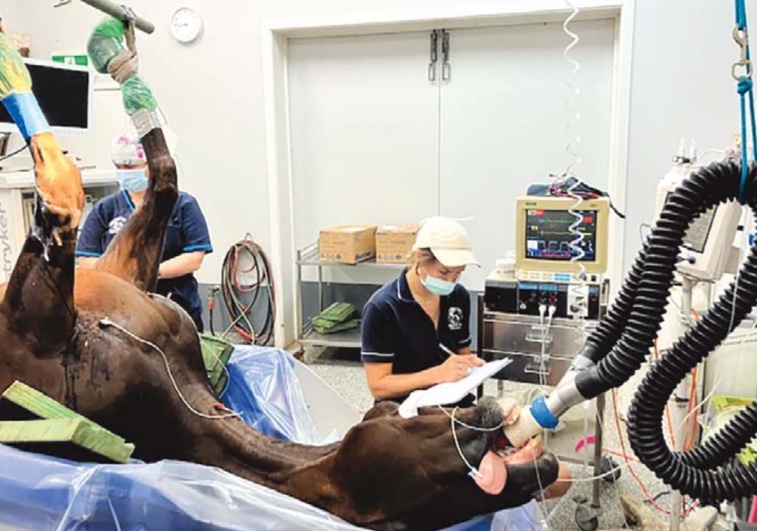
Sedation and Anaesthesia in the horse
The sedation and anaesthetising of horses to perform medical and surgical procedures is very commonly used by veterinarians in equine practice. Here, we are going to look at the history of their use, the common medications that are used and the potential risks associated with them. Only the more commonly used medications will be looked
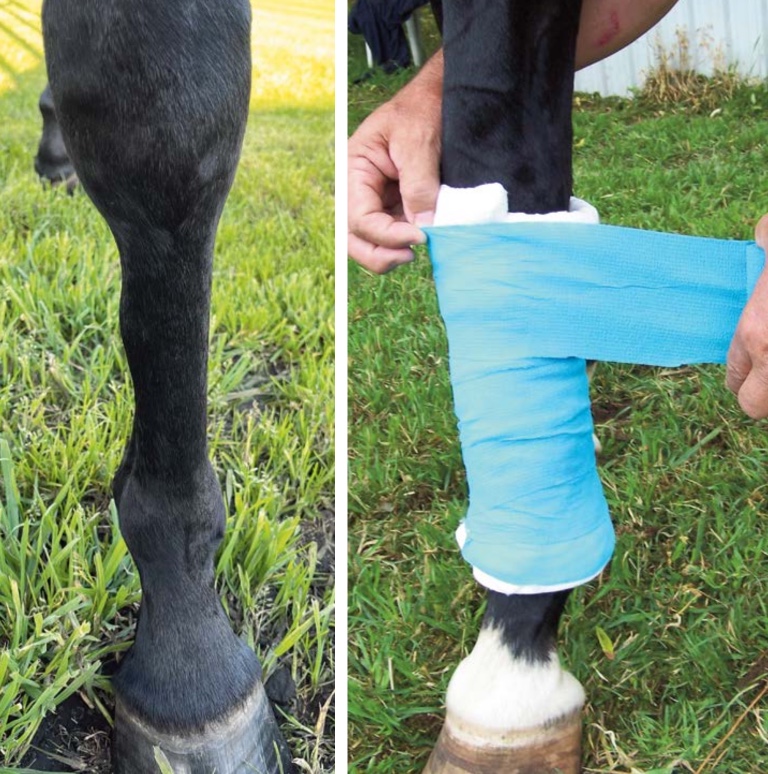
Splints
“Splints” is the common term given to an inflammatory condition of the splint bones of the leg. Here, we are going to have a look at the anatomy, what the condition is and how it is best managed. Anatomy On the inside and outside of the cannon bone there are two long, narrow bones –
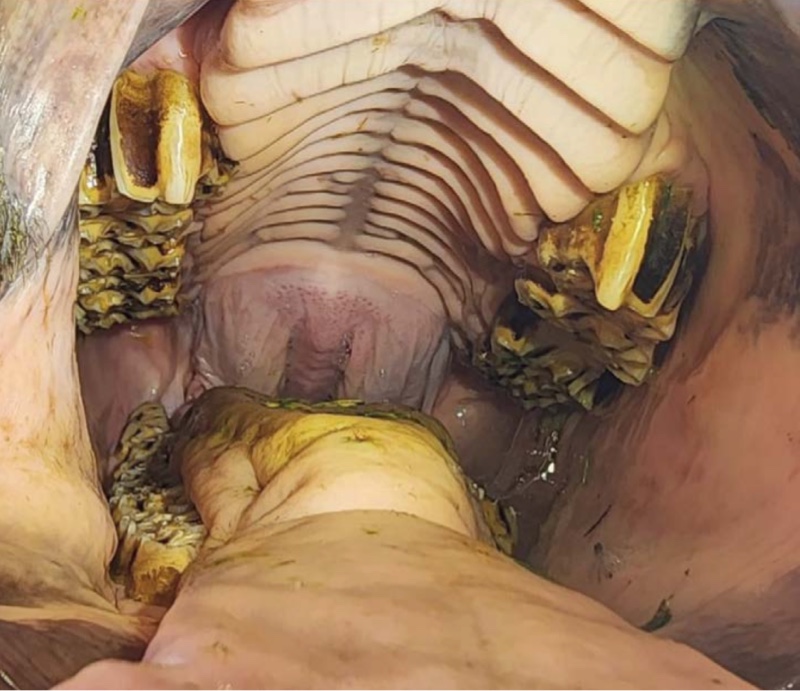
The Importance of Regular Equine Dental Care
Regular dental examination and treatment is an extremely important routine necessity when you own a horse, be it a retired paddock horse or an elite athlete. Equine dentistry has really advanced in the last two decades. In the past, some of the dental procedures and equipment used were barbaric and would be considered unethical today.
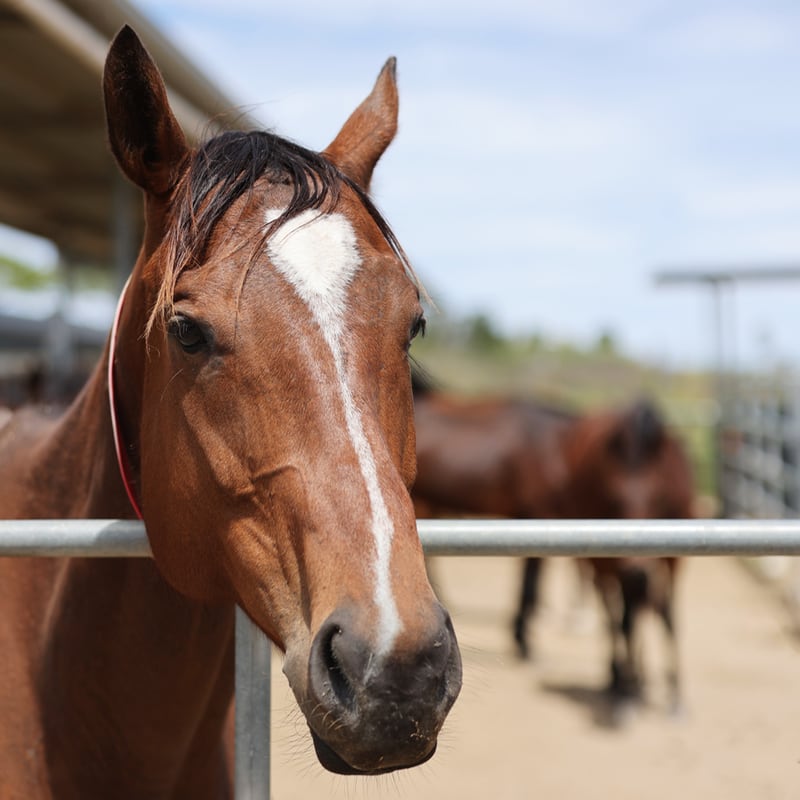
First Aid for the Horse
If you own horses, at some stage a medical emergency is highly likely. Emergencies with your horse can be frightening and confronting. Being prepared is the key. In this and next month’s articles we are going to look at knowing your horse’s vital signs, what constitutes a first aid kit and what to do in
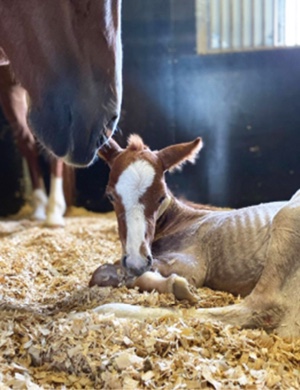
Cryptosporidiosis
There are many different zoonotic diseases to be mindful of when owning horses in Australia; some of the more commonly known ones include Hendra virus, ringworm, Psittacosis and Salmonella. Here we are going to look at cryptosporidiosis, an infectious disease that has been recognised in foals in the last decade. What is a zoonotic disease?
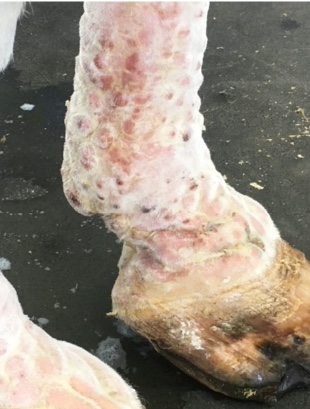
Cellulitis in Horses
A swollen leg caused by cellulitis or lymphangitis is relatively common in the horse and can be very frustrating to treat. The two terms are often used interchangeably, and there is a close relation between these two conditions, and they are often concurrent. Once a horse has had cellulitis or lymphangitis, then recurrence is common,
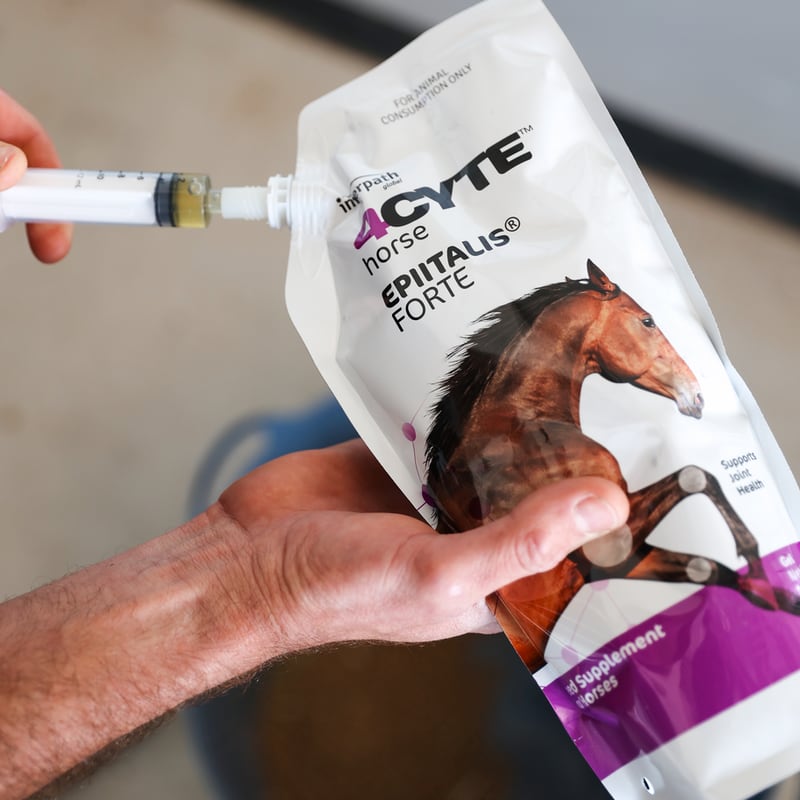
Joint Supplements for Horses
Transcript I’m Nathan Anthony I’m an equine veterinarian with West vets equine hospital and I’m also a team vet with Equestrian Australia for our Equestrian Team. I recommend 4CYTE for our horse’s joint health I think it’s a great product. I see results. I think that as a preventative measure it has real merit. I
Prevention and Treatment for Arthritis in Horses
Osteoarthritis (“OA”) is a common cause of lameness and poor performance in competition horses. OA can occur for a variety of reasons. It can occur secondary to developmental orthopaedic conditions in young horses; it can occur following an acute joint trauma or it can be as a result of chronic wear and tear from training,
The Shortage of Equine Veterinarians
A very different subject this month but one that is important for horse owners to be awareof – the current shortage of equine veterinarians. Across the world, in the last few years, it has become widely acknowledged that there is not only a shortage of veterinarians, it is particularly evident in the equine veterinary profession.
You Can Lead a Horse to Water
All horses must have access to clean drinking water 24 hours a day so that there is no risk of them not getting enough to drink and becoming dehydrated. The essential nutrients in a horses diet are carbohydrates, protein, fat, vitamins, minerals and water. Here we are going to look at the very essential water,
Toxic Weeds and Poisoning
There are many plants found in Australia that can be toxic to horses, and some take only low levels of consumption to cause an effect. Being able to identify these plants, and knowing what to do if you suspect your horse has ingested them can be an invaluable skill to have as a horse owner.
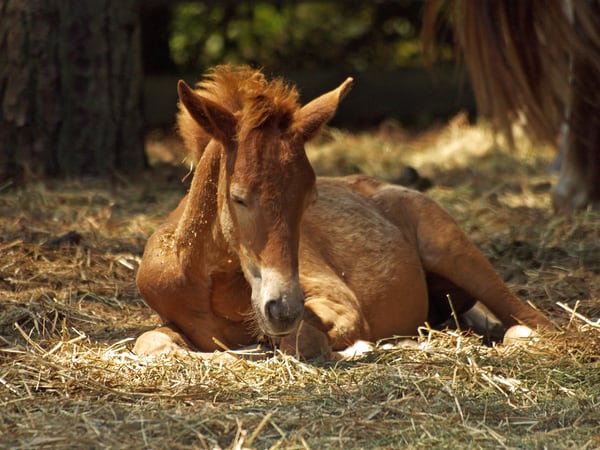
The Foaling Mare
In this article, we are going to look at the normal birthing process and what to expect, what can go wrong and when to call the veterinarian. Most of the time there isn’t an issue and mares foal without difficulty, but it is important that any problem is recognised promptly so the veterinarian can be
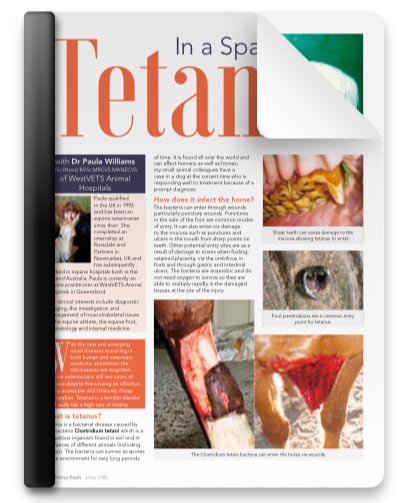
Tetanus
Tetanus is a bacterial disease caused by the bacteria Clostridium tetani which is a ubiquitous organism found in soil and in the faeces of different animals (including horses). The bacteria can survive as spores in the environment for very long periods of time. It is found all over the world and can affect humans as
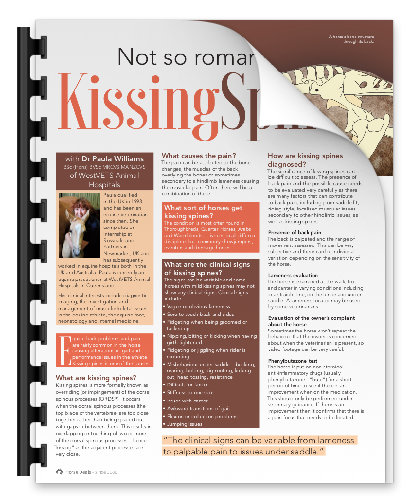
Kissing Spines
Kissing spines is more formally known as overriding (or impingement) of the dorsal spinous processes (ORDSP). It occurs when the dorsal spinous processes (the top blade of the vertebrae) are too close together rather than being spaced out with gaps in between them. This results in overlapping or touching of two or more of the
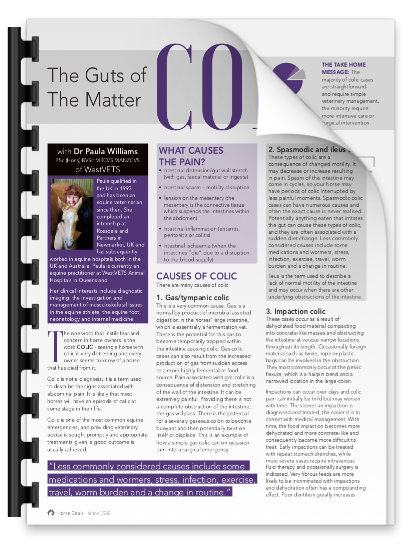
The word Colic instills fear and concern
The one one that instills fear and concern in horse owners is the word “colic” – seeing a horse with colic is very distressing and every owner seems to know of a horse that has died from it.
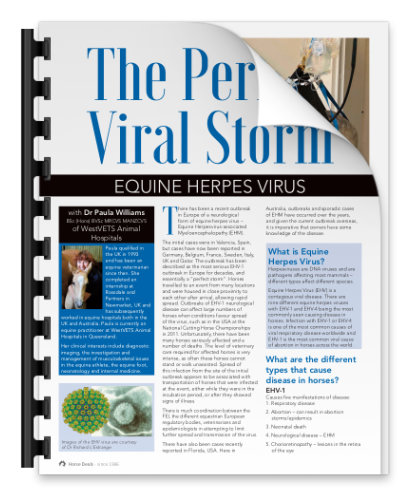
The Perfect Viral Storm – Equine Herpes Virus
Equine Herpes Virus (EHV) is a contagious viral disease. There are nine different equine herpes viruses with EHV-1 and EHV-4 being the most commonly seen causing disease in horses.
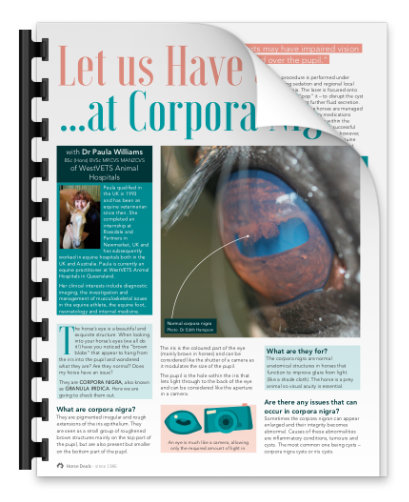
Let us have a look at Corpora Nigra
The horse’s eye is a beautiful and exquisite structure. When looking into your horse’s eyes (we all do it!) have you noticed the “brown blobs” that appear to hang from the iris into the pupil and wondered what they are? Are they normal? Does my horse have an issue?
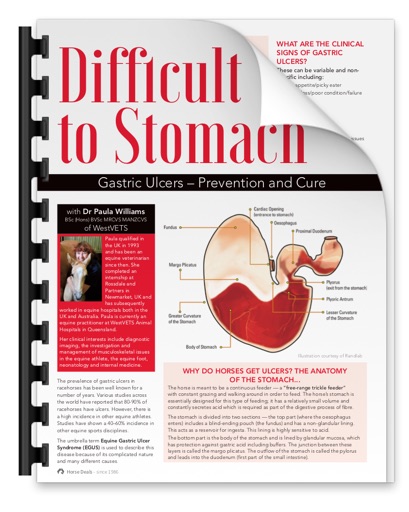
Gastric Ulcers
The prevalence of gastric ulcers in racehorses has been well known for a number of years. Various studies across the world have reported that 80-90% of racehorses have ulcers. However, there is a high incidence in other equine athletes. Studies have shown a 40–60% incidence in other equine sports disciplines.
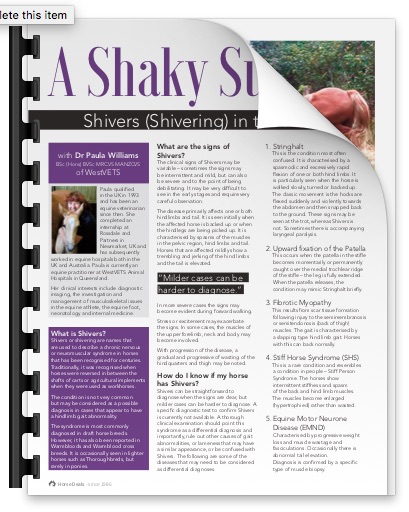
A Shaky Subject
Shivers or shivering are names that are used to describe a chronic nervous or neuromuscular syndrome in horses that has been recognised for centuries. Traditionally, it was recognised when horses were reversed in between the shafts of carts or agricultural implements when they were used as workhorses.
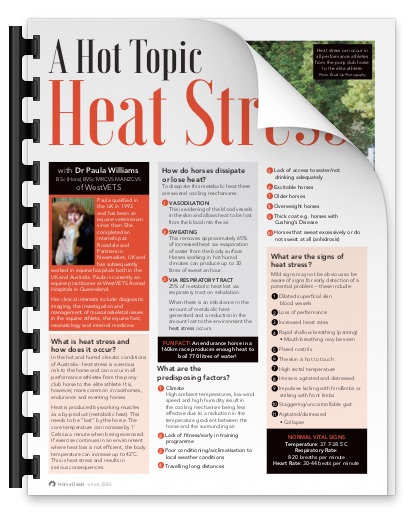
Heat Stress
In the hot and humid climatic conditions of Australia – heat stress is a serious risk to the horse and can occur in all performance athletes from the pony club horse to the elite athlete. It is, however, more common in racehorses, endurance and eventing horses.
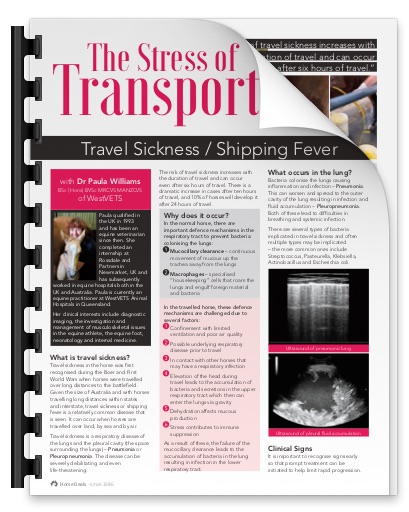
The Stress of Transportation
The risk of travel sickness increases with the duration of travel and can occur even after six hours of travel. There is a dramatic increase in cases after ten hours of travel, and 10% of horses will develop it after 24 hours of travel.
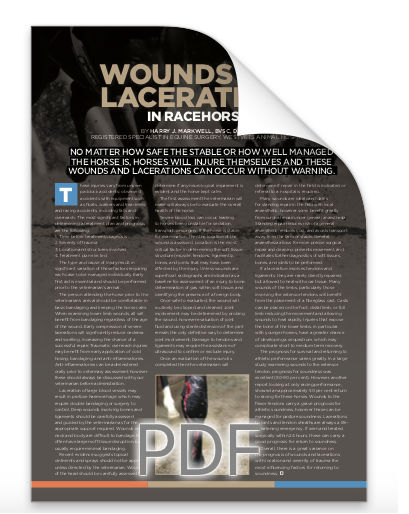
Wounds and Lacerations
No matter how safe the stable or how well managed the horse is, horses will injure themselves and these wounds and lacerations can occur without warning.
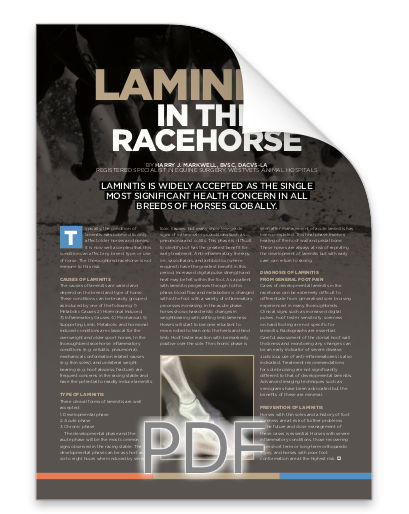
Laminitis in the Racehorse
Laminitis is widely accepted as the single most significant health concern in all breeds of horses globally.
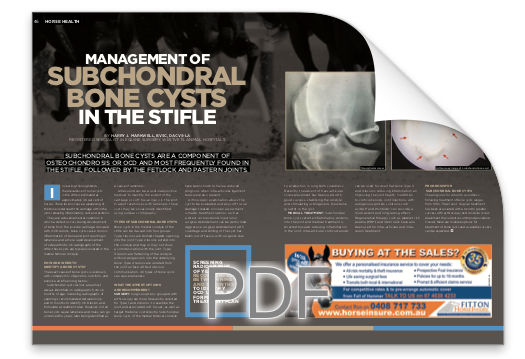
Management of Subchondral Bone Cysts in the Stifle
Subchondral bone cysts are a component of osteochondrosis or OCD and most frequently found in the stifle, followed by the fetlock and pastern joints.
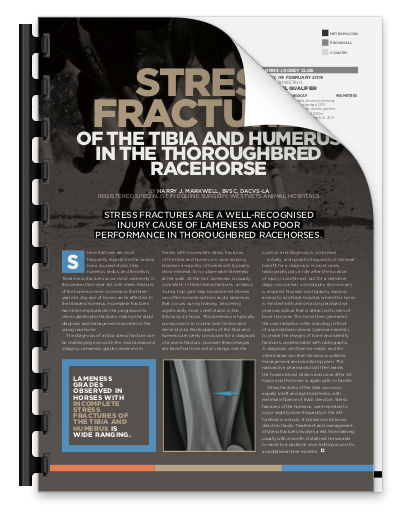
Stress Fractures of the Tibia and Humerus in the Thoroughbred Racehorse
Stress fractures are a well recognised injury cause of lameness and poor performance in thoroughbred racehorses.
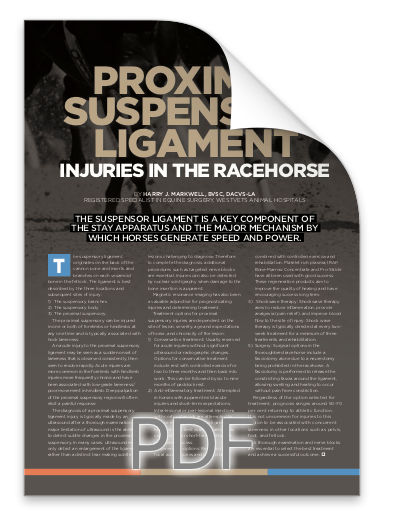
Proximal Suspensory Ligament Injuries
The suspensor ligament is a key component of the stay apparatus and the major mechanism by which horses generate speed and power.
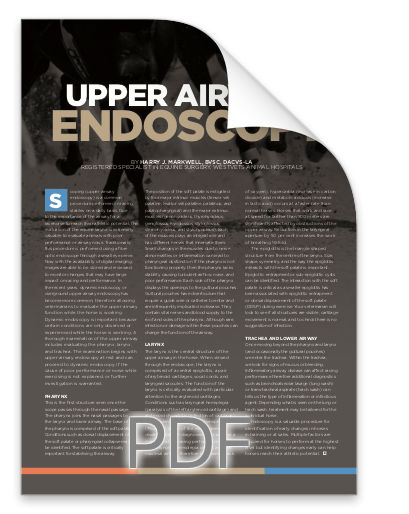
Upper Airways Endoscopy
Scoping (upper airway endoscopy) is a common procedure performed in racing stables on a daily basis. Due to the importance of the airway for a racehorse to reach their athletic potential, the evaluation of the equine larynx is extremely valuable to evaluate animals with poor performance or airway noise.
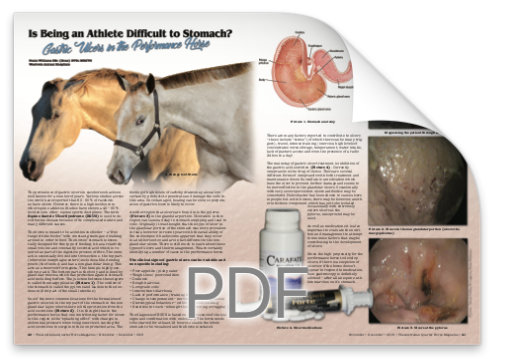
Gastic Ulcers in the Performance Horse
The prevalence of gastric ulcers in racehorses has been well known for a number of years. Various studies across the world have reported that 80 – 90 % of racehorses have ulcers. However, there is a high incidence in other equine athletes. Studies have shown a 40 – 60 % incidence in other equine sports
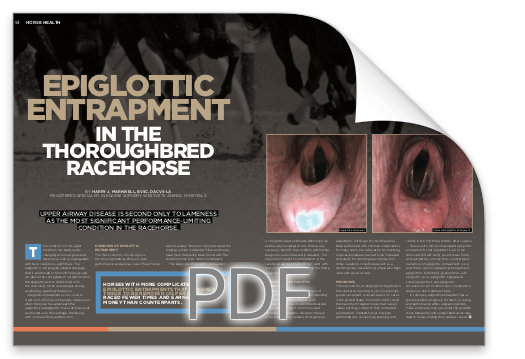
Epiglottic Entrapment
Upper airway disease is second only to lameness as the most significant performance-limiting condition in the racehorse. The conditions of the upper condition can be dynamic, changing as horses grow and develop, as well as manageable with tack, conditions, and fitness. The epiglottis is a triangular shaped cartilage that is positioned in front of the
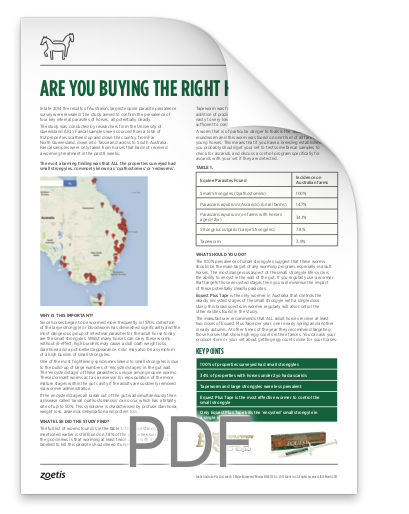
Are you buying the right horse wormer?
In late 2014 the results of Australia’s largest equine parasite prevalence survey were revealed. The study aimed to confirm the prevalence of four key internal parasites of horses, all potentially deadly. The study was conducted by researchers from the University of Queensland (UQ). Faecal samples were sourced from a total of 102 properties scattered up
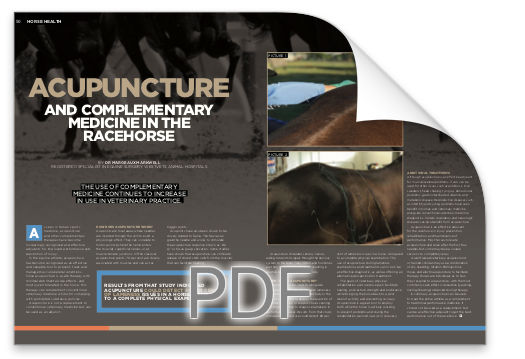
Acupuncture and complete medicine in the racehorse
The use of complementary medicine continues to increase in use in veterinary practice. As seen in human sports medicine, acupuncture and other complementary therapies have become increasingly recognised and effective adjuvants for improved performance and prevention of injury. In the equine athlete, acupuncture has become recognised as an effective and valuable tool to prevent, treat
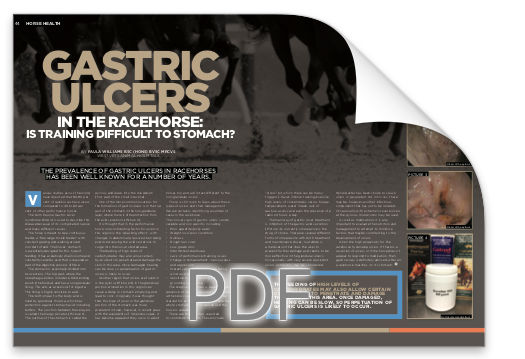
Gastric Ulcers in the Racehorse
The prevalence of gastric ulcers in racehorses has been well known for a number of years. Various studies across the world have reported that 80-90 per cent of racehorses have ulcers compared to 40 to 60 per cent of other performance horses.
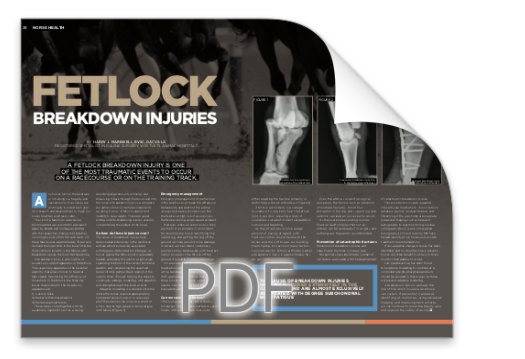
Fetlock Breakdown Injuries
A fetlock breakdown injury is one of the most traumatic events to occur on a racecourse or on the training track. The cause of breakdown injuries have been studied extensively in the racehorse and are almost exclusively associated with degree subchondral bone fatigue.
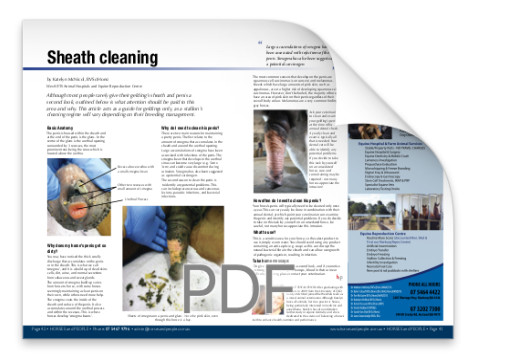
Penile Pampering – sheath cleaning
Although most people rarely give their gelding’s sheath and penis a second look, outlined below is what attention should be paid to this area and why. This article acts as a guide for geldings only, as a stallion’s cleaning regime will vary depending on their breeding management.
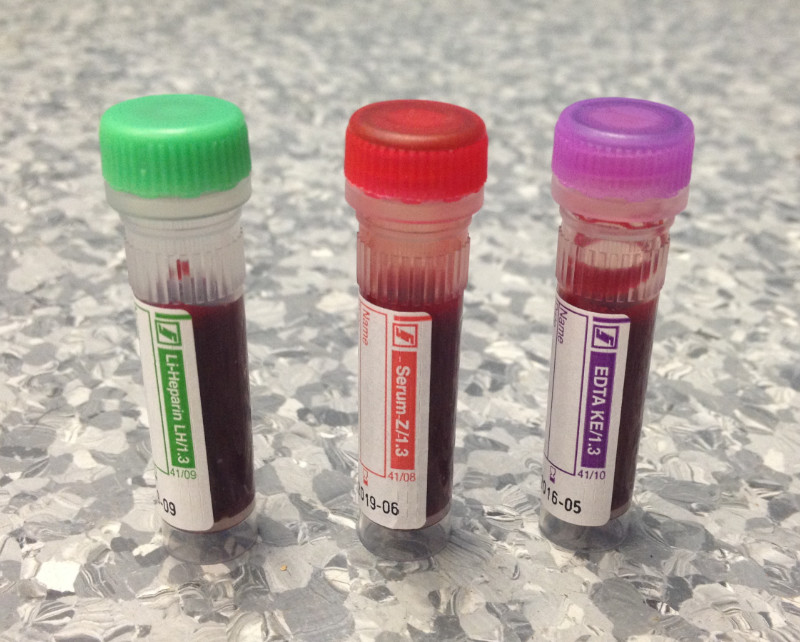
What can your horse’s blood tell you?
It’s something we do almost every day as veterinarians: collect some blood from one of our patients to try and determine what is going on internally. But have you ever wondered what we’re looking at? This article aims to give you a brief overview of what tests can be performed on blood and thus the
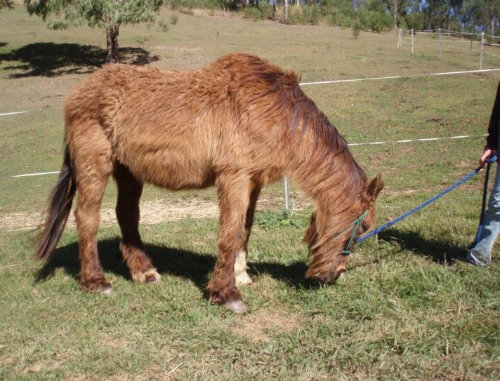
Equine Cushing’s Disease
What Is Cushing’s Disease? You may have heard of Cushing’s Disease in humans, however it is not quite the same disease in horses and is more correctly named Pituitary Pars Intermediary Dysfunction (PPID). It is the most common endocrine (hormone) disease affecting horses. PPID is typically a condition of older horses, usually over the age
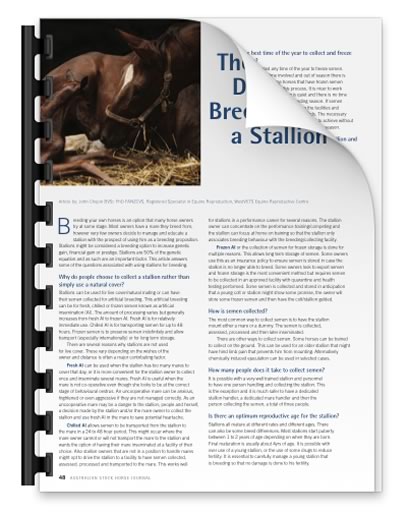
The Ups and Downs of Breeding with a Stallion
Breeding your own horses is an option that many horse owners try at some stage. Most owners have a mare they breed from, however very few owners decide to manage and educate a stallion with the prospect of using him as a breeding proposition. Stallions might be considered a breeding option to increase genetic gain,
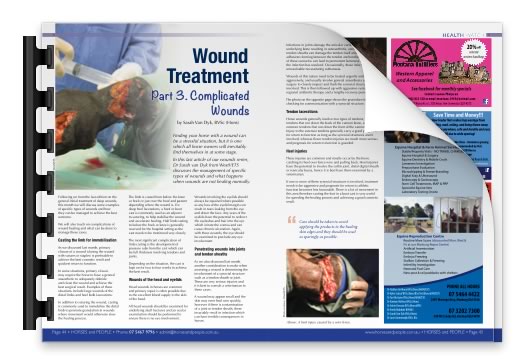
Wound Treatment part 3 (Complicated Wounds)
Following on from the last edition on the general initial treatment of deep wounds, this month we will discuss some examples of specific types of wounds and how they can be managed to achieve the best outcome. We will also touch on complications of wound healing and what can be done to manage these cases.
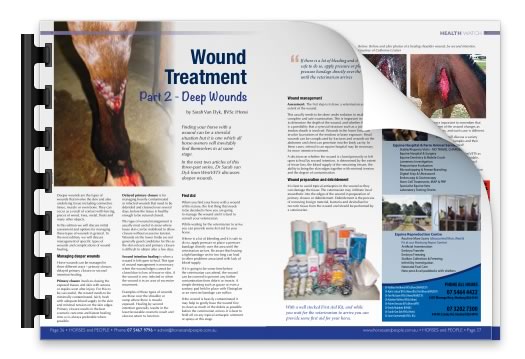
Wound Treatment part 2 (Deep Wounds)
Finding your horse with a wound can be a stressful situation but it is one which all horse owners will inevitably find themselves in at some stage.In the next two articles of this three-part series, Dr Sarah van Dyk from WestVETS discusses deeper wounds.
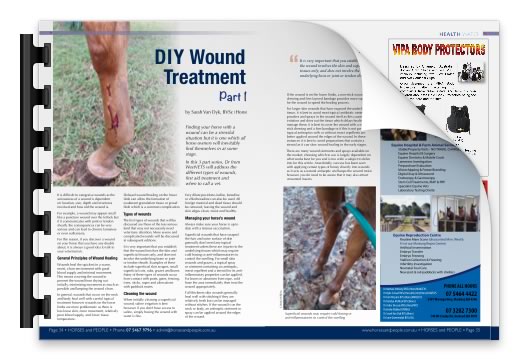
Wound Treatment part 1 (DIY)
Finding your horse with a wound can be a stressful situation but it is one which all horse owners will inevitably find themselves in at some stage.In this 3 part series, Dr from WestVETS will address the different types of wounds, first aid treatment and when to call a vet.
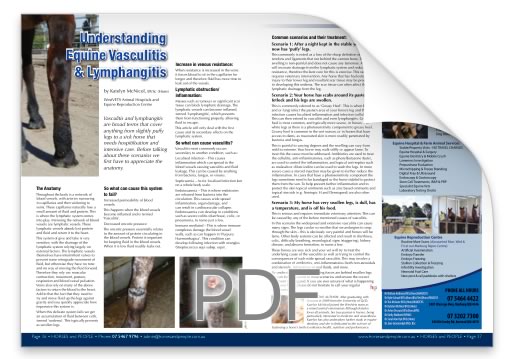
Understanding Equine Vasculitis and Lymphangitis
Vasculitis and lymphangitis are broad terms that cover anything from slightly puffy legs to a sick horse that needs hospitilisation and intensive care. Before talking about these scenarios we first have to appreciate the anatomy.
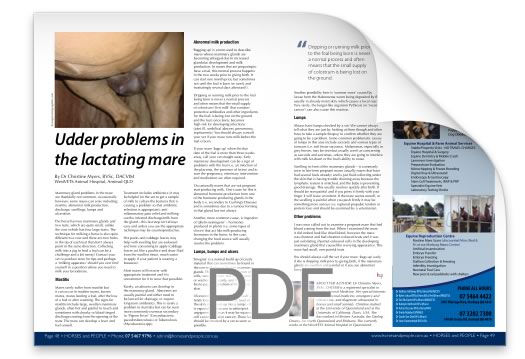
Udder Problems in the Lactating Mare
Mammary gland problems in the mare are thankfully not common, occasionally however, some issues can arise including; mastitis, abnormal milk production, discharge, swellings, lumps and ulceration. The horse has two mammary glands and two teats, which are quite small, unlike the cow (which has four large teats). The technique for milking a horse is also
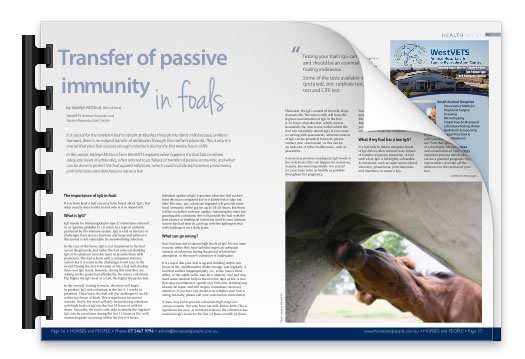
Transfer of Passive Immunity
It is crucial for the newborn foal to obtain antibodies through the dam’s milk because, unlike in humans, there is no natural transfer of antibodies through the mother’s placenta. This is why it is crucial that your foal receives enough colostrum during the first twelve hours of life. In this article, Katelyn McNicol from WestVETS
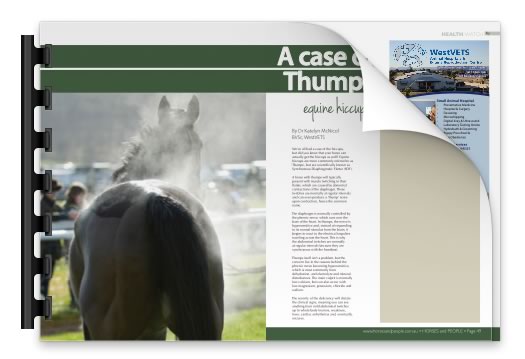
A Case of Thumps
We’ve all had a case of the hiccups, but did you know that your horse can actually get the hiccups as well? Equine hiccups are more commonly referred to as ‘Thumps’, but are scientifically known as Synchronous Diaphragmatic Flutter (SDF). A horse with thumps will typically present with muscle twitching in their flanks, which are
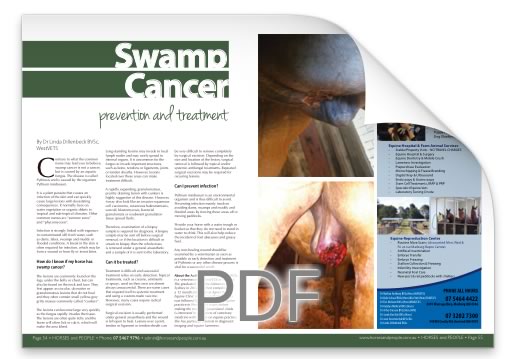
Swamp Cancer
Contrary to what the common name may lead you to believe, swamp cancer is not a cancer, but is caused by an aquatic fungus. The disease is called Pythiosis and is caused by the organism Pythium insidiosum. It is a plant parasite that causes an infection of the skin and can quickly cause large lesions
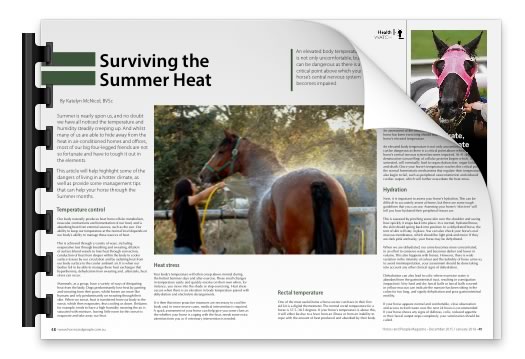
Surviving the Summer Heat
Summer is nearly upon us, and no doubt we have all noticed the temperature and humidity steadily creeping up. And whilst many of us are able to hide away from the heat in air-conditioned homes and offices, most of our big four-legged friends are not so fortunate and have to tough it out in the
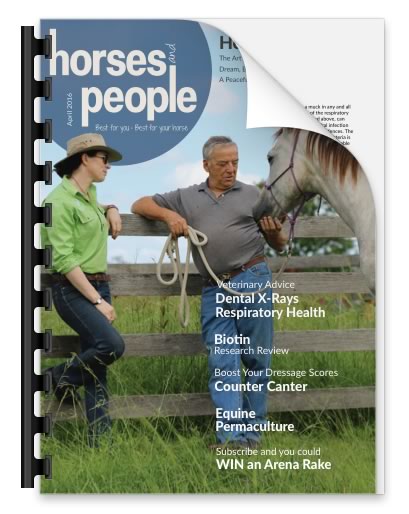
Respiratory Conditions part 2
Every day, your horse’s respiratory tract is challenged by pathogens, such as bacteria, viruses and fungal elements. In the majority of cases, your horse’s immune system and defence mechanisms easily overcome these small challenges without any external symptoms. Some mes, however, when the challenge is too great or the defence mechanisms are overwhelmed, clinical infec
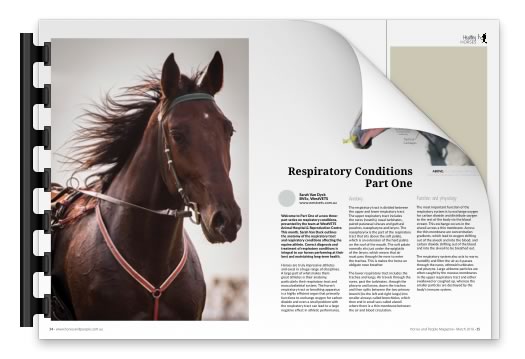
Respiratory Conditions part 1
Welcome to Part One of a new three- part series on respiratory conditions, presented by the team at WestVETS Animal Hospital & Reproduction Centre. This month, Sarah Van Dyck outlines the anatomy of the respiratory tract and respiratory conditions affecting the equine athlete. Correct diagnosis and treatment of respiratory conditions is integral to our horses
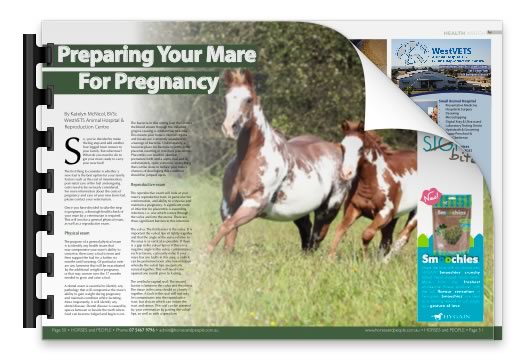
Preparing Your Mare For Pregnancy
So, you’ve decided to make the big step and add another four legged lawn mower to your family. But what now? What do you need to do to get your mare ready to carry your new foal? The first thing to consider is whether a new foal is the best option for your family. Factors
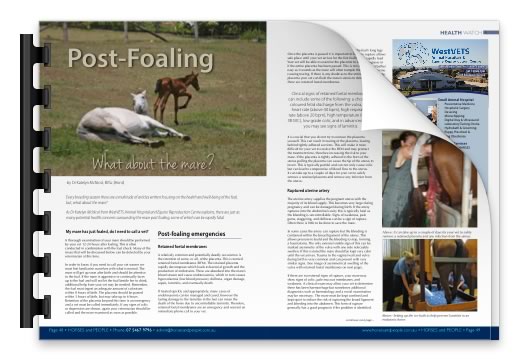
Post-Foaling – What About the Mare?
Every breeding season there are a multitude of articles written focusing on the health and well-being of the foal, but, what about the mare? As Dr Katelyn McNicol from WestVETS Animal Hospital and Equine Reproduction Centre explains, there are just as many potential health concerns surrounding the mare post foaling, some of which can be
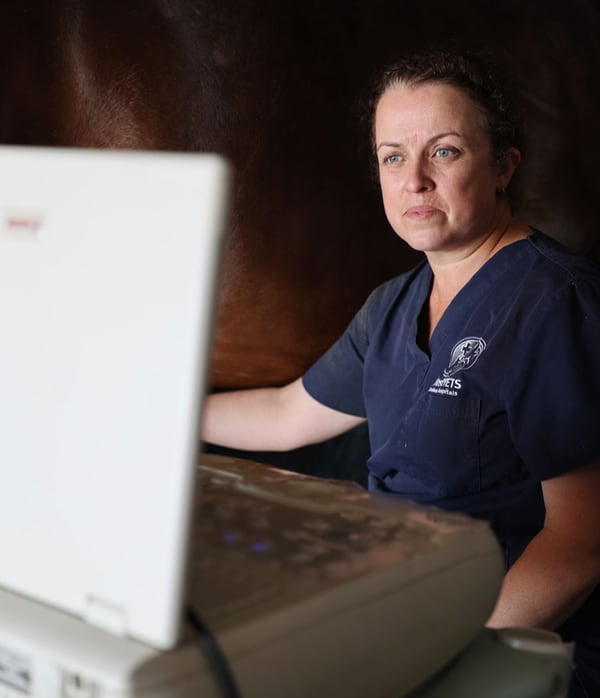
Placentitis in the Mare
Placentitis can be a devastating problem in the horse leading to abortion, stillbirths or weak or premature foals. It is the most prevalent cause of premature delivery of a foal and accounts for over half of the pregnancy losses in Australia. Placentitis is inflammation of the placenta, the temporary organ that forms to support the
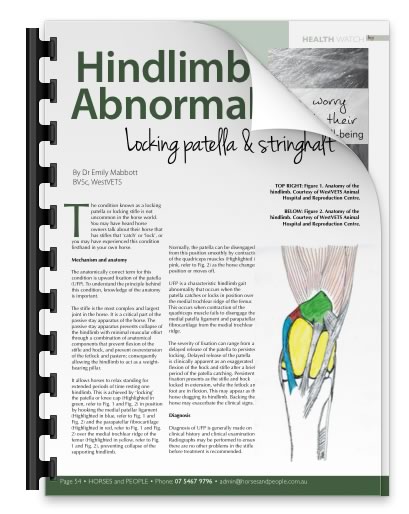
Hindlimb Abnormalities
The condition known as a locking patella or locking stifle is not uncommon in the horse world. You may have heard horse owners talk about their horse that has stifles that ‘catch’ or ‘lock’, or you may have experienced this condition firsthand in your own horse.
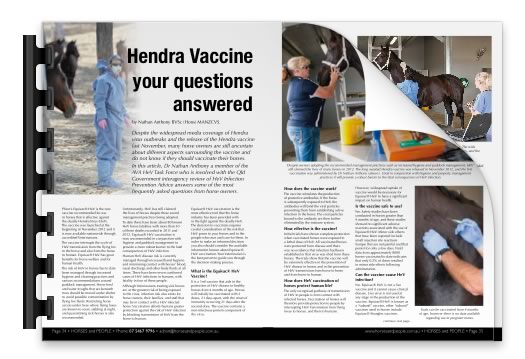
Hendra Vaccine – Your Questions Answered
Despite the widespread media coverage of Hendra virus outbreaks and the release of the Hendra vaccine last November, many horse owners are still uncertain about different aspects surrounding the vaccine and do not know if they should vaccinate their horses. In this article, Dr Nathan Anthony a member of the AVA HeV Task Force who
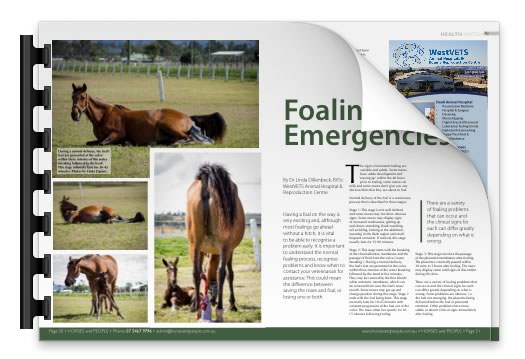
Foaling Emergencies
Having a foal on the way is very exciting and, although most foalings go ahead without a hitch, it is vital to be able to recognise a problem early. It is important to understand the normal foaling process, recognise problems and know when to contact your veterinarian for assistance. This could mean the difference between
Foaling and the Newborn
With the onset of spring and warmer days comes the arrival of the long anticipated foal. After the costs involved in breeding and maintaining your pregnant mare, a loss of a foal can be a devastating experience both emotionally and financially. Knowledge and preparation can be vital in preventing a potential disaster with your foal
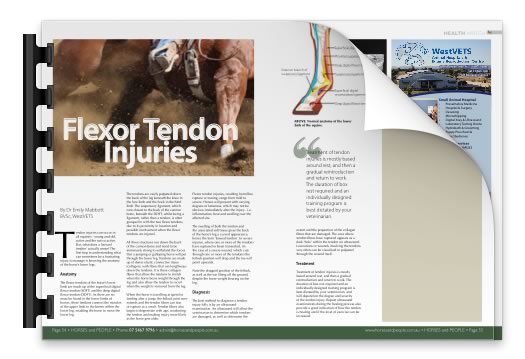
Flexor Tendon Injuries
Tendon injuries can occur in all equines – young and old, active and the not so active. But, what does a ‘bowed tendon’ actually mean? The first step in understanding what can sometimes be a frustrating injury to manage is knowing the anatomy of the horse’s lower legs. Treatment of tendon injuries is mostly based
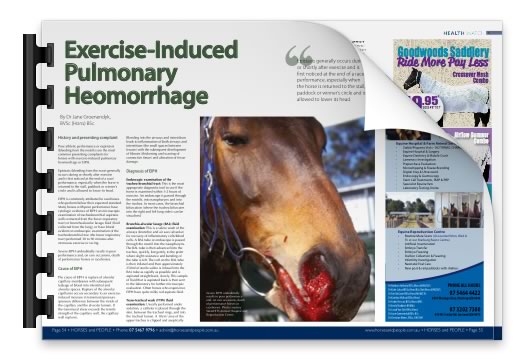
Exercise Induced Pulmonary Heomorrhage
Poor athletic performance or expistaxis (bleeding from the nostrils) are the most common presenting complaints for horses with exercise-induced pulmonary heomorrhage or EIPH. Epistaxis (bleeding from the nose) generally occurs during or shortly after exercise and is first noticed at the end of a race/ performance, especially when the horse is returned to the stall,
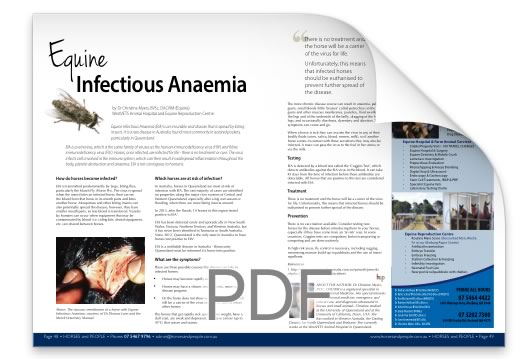
Equine Infectious Anemia
Equine Infectious Anaemia (EIA) is an incurable viral disease that is spread by biting insects. It is a rare disease in Australia, found most commonly in isolated pockets, particularly in Queensland. EIA is a retrovirus, which is the same family of viruses as the human immunodeficiency virus (HIV) and feline immunodeficiency virus (FIV). Horses, once
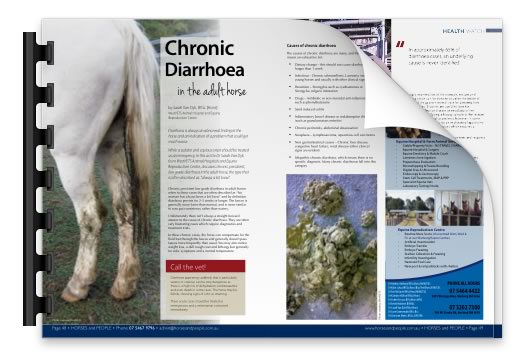
Chronic Diarrhoea
Diarrhoea is always an abnormal finding in the horse and an indication of a problem that could get much worse. While a sudden and copious onset should be treated as an emergency, in this article Dr Sarah Van Dyk from WestVETS Animal Hospitals and Equine Reproduction Centre, discusses chronic, persistent, low grade diarrhoea in the
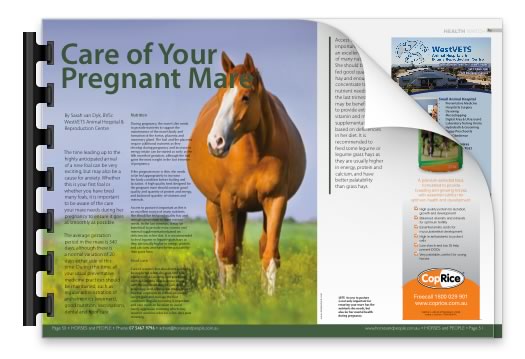
Care of your pregnant mare
The time leading up to the highly anticipated arrival of a new foal can be very exciting, but may also be a cause for anxiety. Whether this is your first foal or whether you have bred many foals, it is important to be aware of the care your mare needs during her pregnancy to ensure
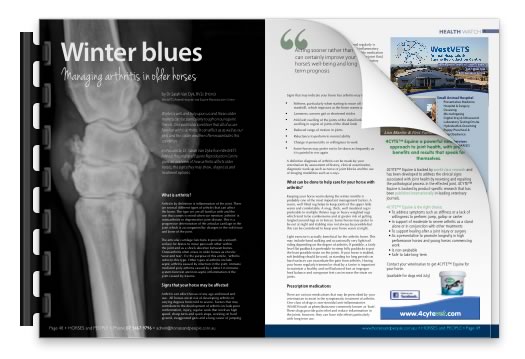
Arthritis in Older Horses
Winter is well and truly upon us and these colder months can be particularly tough on our equine friends. One particular condition that all of us are familiar with is arthritis. It can affect us as well as our pets and the colder weather often exacerbates this condition. In this article, Dr .Sarah Van Dyke
Rattles in Foals
‘Rattles’ is the name given to a lung infection (bacterial pneumonia) in foals caused by the bacteria Rhodococcus equi (R. equi). The disease is called ‘Rattles’ because of the rattling sound a sick foal can make while trying to breath with pus in the lungs. This bacteria is tough and can survive in soil. The
Mastitis and other mammary gland problems in the mare
Mammary gland problems in the mare are thankfully not common, however occasionally some issues can arise including; mastitis, abnormal milk production, discharge, swellings, lumps and ulceration. The horse has two mammary glands and two teats, which are quite small, unlike the cow (which has four large teats). The technique for milking a horse is also
Hendra Virus
A very topical issue at the moment is that of Hendra Virus. With the recent outbreaks in Northern Queensland Hendra is foremost in many horse owners minds. Hendra Virus is an emerging disease that is carried by flying foxes that has the potential to cause fatal disease in horses and humans. The first case was
Bone Cysts
Bone cysts are a condition that frustrate horse owners, and although they are a relatively common occurrence, how and why they develop is still not fully understood or agreed upon. Bone cysts are cyst-like structures that develop below the articular cartilage surface of joints. They can result from direct trauma to the articular surface, or
Laminitis
Laminitis, also referred to as founder, is a complex and serious disease that every horse owner should be aware of. It can occur in horses and ponies of any size, breed, or discipline, and unfortunately can mean the end of your horse’s career, or even their life. The Normal Equine Foot To understand laminitis you

Tendon Lesion Treatments
Tendon injuries are unfortunately a common occurrence in equine practice. Work or competition at speed, on unlevel ground, or over jumps increases the risk of sustaining an injury to the flexor tendons. When at speed or landing after a jump the fetlock joint is over-extended and the tendon fibres can tear or rupture. Tendon fibres
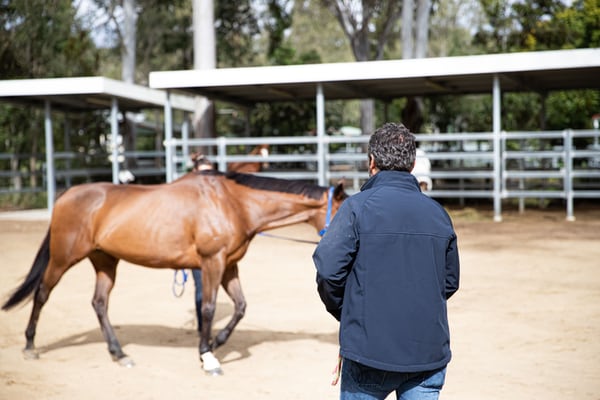
Travel Sickness
Moving horses interstate & internationally is a common occurrence in the equine industry. A disease associated with long distance movement is called Travel Sickness, also known as Shipping Fever or Pleuropneumonia. A respiratory disease of the lung tissue and pleural cavity (the space adjacent to the lungs in the chest), pleuropneumonia has been a well
Upper Respiratory Tract Disease in the Horse
Horses are obligate nasal breathers, meaning that they can only breathe through their noses. On inspiration air passes up through the nostrils, through the nasal passages and into the nasopharynx, through the larynx and into the trachea (or windpipe) to the lungs. The horse has a large lung capacity and during fast work airflow can
Complete Care for your Horse and Pony
Did you know that that world’s horse population is estimated at 75,000,000? Owning a horse or pony can be most rewarding. Aside from the obvious companionship, an equine friend can serve as a wonderful educational tool for young owners/riders and a fabulous source of wellbeing and competition for older owners/riders. Many people on acreage in
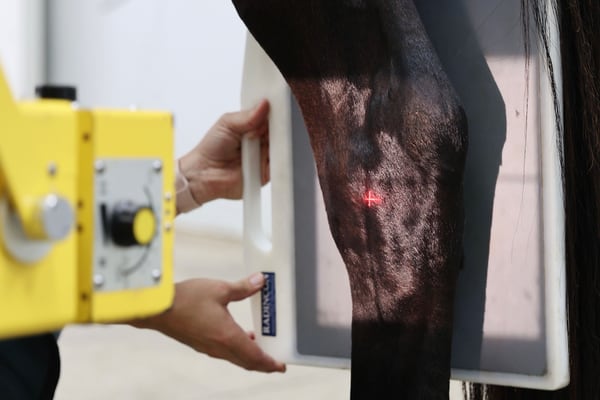
Horse Winter Welfare
With winter now here, it is time to really think about how to look after your horse in the colder weather. Horses and ponies, particularly older ones, can lose weight easily over winter. The nutrition in the grass has fallen, and the paddocks are becoming more bare. Additionally, it takes more energy to keep warm
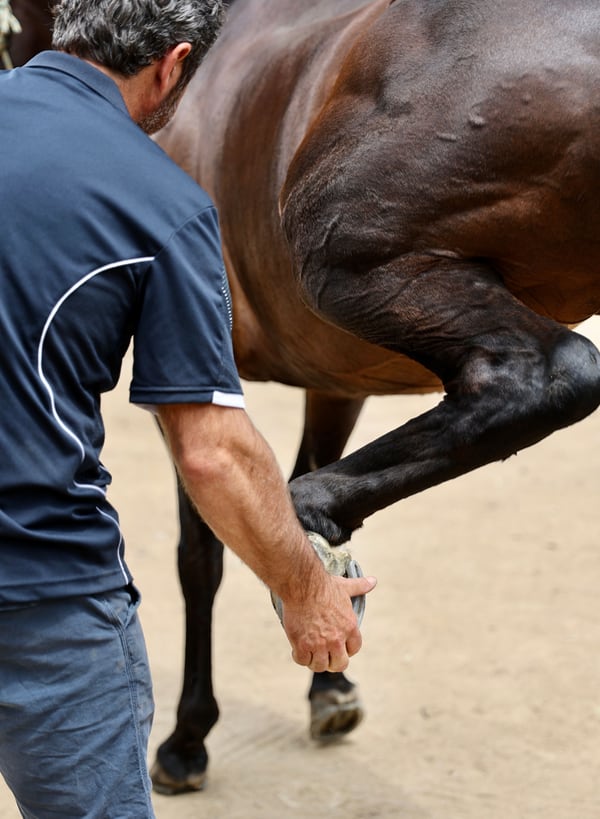
Treating and Preventing Joint Disease
Degenerative Joint Disease (DJD), resulting in osteoarthritis, is a common cause of lameness and poor performance in horses. DJD can occur for a variety of reasons. It can be the sequele to developmental orthopaedic conditions in young horses; it can occur following an acute trauma to the joint or it can be a result of
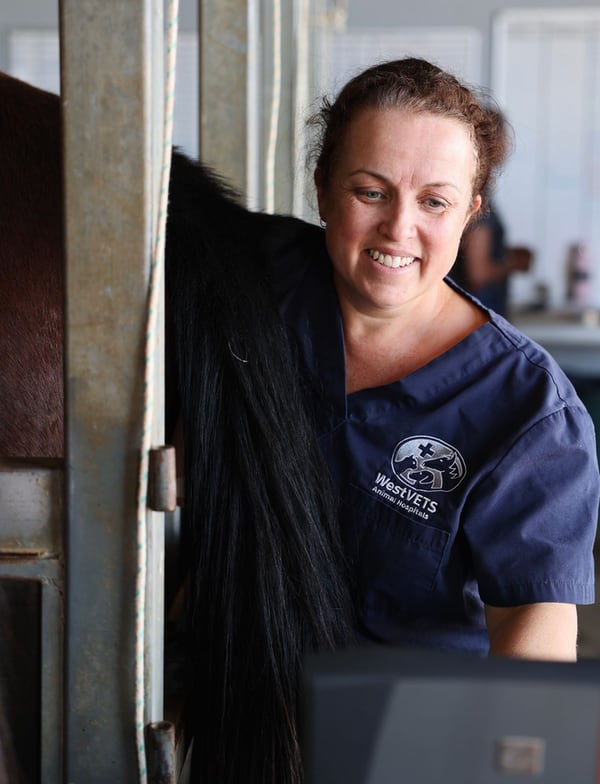
Double Trouble: Twin Pregnancies
Twins may seem like double the fun, but in reality a twin pregnancy can result in the death of both foals and the mare. Twin pregnancies can occur if there are multiple ovulations around the time of insemination or mating. The frequency of twin conceptions varies between breeds and individual mares, with mares that have
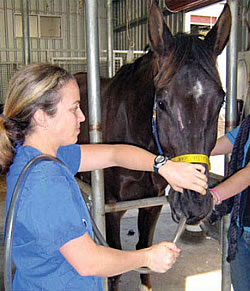
Colic
Colic is arguably the most feared disease of horses. It seems that every horse owner knows of a horse that has died from colic. Colic is potentially fatal for horses, however the far majority of cases of colic respond to simple treatment and very few colics are fatal. The term ‘colic’ in horses simply describes
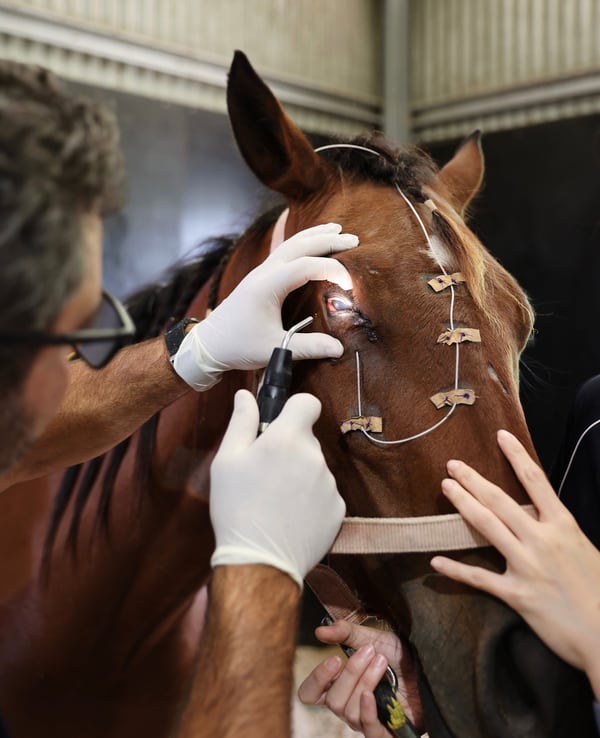
Blind Faith
Horses are very dependant on vision both as instinctive prey animals and as performance horses in which ever field of competition they are involved. While many ocular diseases in the horse have the potential to heal if treated they can just as easily deteriorate to cause irreversible loss of vision. Therefore all conditions of the
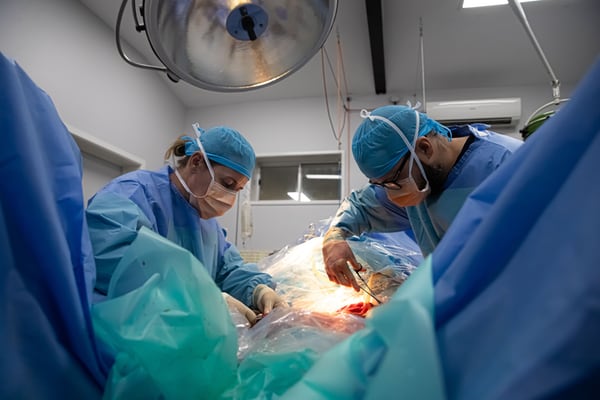
Understanding Colic
Definition and Statistics Colic simply means abdominal or belly pain. Most horses will have an episode of colic at some time during their life, but as some owners know, a horse rolling and thrashing violently on the ground can be quite a scary sight. Symptoms of Colic As horse owners, it is extremely important that
Miniature Horses
Miniature horses first came on the scene in the 1600’s when they featured as an exhibit at King Louis the Fourteenth’s zoo of bizarre animals. They became a favoured pet of European aristocracy due to their novelty value but life was not always so rosey. While some miniatures were being pampered in the great houses
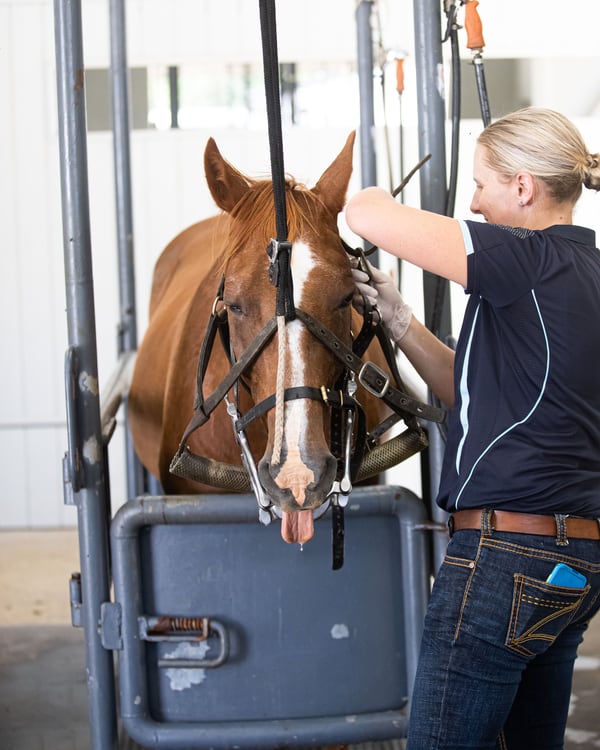
5 Myths on Equine Dentistry
An average horse has between 36 and 40 teeth, consisting of 12 incisors, 12 premolars and 12 molars. The extras are made up of canines or wolf teeth if present. Cheek teeth should be in a straight line and are supposed to have a rough surface. This allows for grinding of food. Teeth are considered
